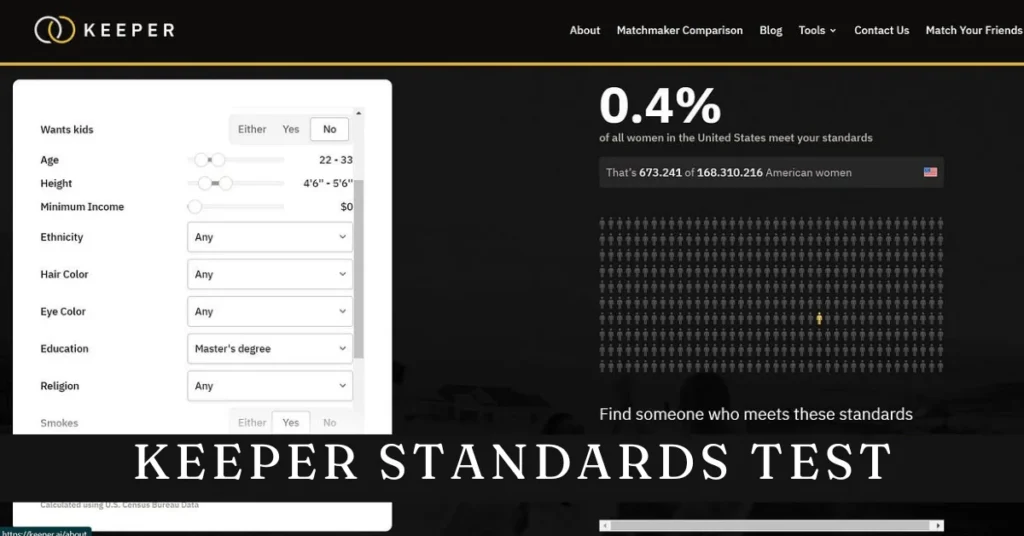Understanding the Keeper Standards Test
What Is the Keeper Standards Test?
The Keeper Standards Test is a comprehensive evaluation framework for AI systems, designed to assess their reliability, safety, and ethical alignment. Think of it as a meticulous inspector, scrutinizing AI technologies to ensure they perform as promised—without unintended consequences.
Its purpose isn’t just to measure performance but to safeguard user trust. Whether it’s a healthcare AI diagnosing patients or an autonomous vehicle navigating traffic, the test ensures these systems are fit for real-world challenges.
How the Test Came to Be
The origins of the Keeper Standards Test can be traced to the early days of AI deployment, where a lack of standardization often led to unpredictable results. With growing concerns about AI bias, safety risks, and ethical compliance, industry leaders and researchers developed this robust framework to fill the gaps.
Today, it’s recognized as a gold standard for evaluating AI technologies, shaping how organizations build and deploy intelligent systems.
The Importance of Rigorous Testing in AI
High Stakes of AI Deployment
AI technologies now touch almost every corner of society. In healthcare, they analyze patient data to recommend treatments. In finance, they detect fraudulent transactions in real time. And in transportation, they power autonomous vehicles. When the stakes are this high, even a minor malfunction can have devastating consequences.
Testing ensures these systems deliver consistent, accurate, and safe results, fostering trust among users and stakeholders.
Risks of Unchecked AI Development
Imagine an AI system that inadvertently favors one demographic over another, or a self-driving car that struggles to recognize a pedestrian. Such scenarios are not hypothetical—they’ve occurred, and they highlight the dangers of releasing untested AI into the wild. It helps mitigate these risks by catching flaws before they lead to real-world harm.
Without rigorous testing, we risk undermining public confidence in AI, slowing its adoption and potential to improve lives.
Key Features of the Keeper Standards Test
Ethical Compliance
Ethics is at the core of the Keeper Standards Test. It checks if AI systems are in line with global standards, fair and accountable. For example an AI hiring tool must not be biased towards gender, race or age – that’s non negotiable when it comes to trust.
Performance Metrics
Accuracy, reliability and scalability – these are the three pillars of AI performance measured by the test. Whether it’s a chatbot answering customer queries or a logistics AI optimising delivery routes, performance metrics ensures these systems deliver what they’re supposed to.
Safety Validation
AI systems must be able to handle the unexpected. It puts them through fail-safe testing to ensure they work safely even in extreme conditions. For example an autonomous vehicle’s braking system is tested to prevent accidents in emergency situations.
Transparency Standards
Transparency builds bridges between AI developers and users. The Keeper Standards Test requires clear decision making so users understand how an AI system arrives at its conclusions. This openness reduces the fear of the “black box” and builds trust.
Why Implement the Keeper Standards Test
Bias Mitigation
AI bias is not just a technical problem – it’s an ethical one. It tests algorithms to ensure fairness across all demographics, reducing the chance of discriminatory outcomes. This commitment to fairness builds trust in AI.
Public Confidence
Trust is hard to get and easy to lose. By showing rigorous testing and adherence to high standards the Keeper Standards Test proves to users that AI is reliable and safe. This transparency builds long term confidence in AI adoption.
Legal Compliance
As AI becomes more widespread so do the regulations around it. It aligns systems with global standards so organisations can avoid legal landmines. Compliance is not just necessary – it’s the foundation of trustworthy AI.
Market Differentiation
Being Keeper Standards Test compliant can be a market differentiator. Companies that put reliability and ethics at the heart of their AI systems will win customer trust and loyalty and have a competitive edge.
How the Keeper Standards Test Works
Initial Assessment
Before testing begins the Keeper Standards Test evaluates the AI system’s goals and use cases. This stage ensures the test criteria is tailored to the system’s functionality.
Testing
The test puts AI systems through a series of scenarios – from everyday tasks to edge cases – to test their performance. This thorough approach reveals vulnerabilities that would otherwise be hidden and ensures systems are production ready.
Certification and Monitoring
The process doesn’t stop after the initial test. Certification proves an AI system meets the Keeper Standards and monitoring ensures it stays compliant as it changes. This ongoing scrutiny is key to maintaining trust over time.
Examples Across Industry
Healthcare
AI in healthcare needs to be super accurate and reliable. The Keeper Standards Test has been used to test diagnostic tools that analyse patient scans.
Finance
Fraud detection, risk management, and credit scoring are just a few areas where AI plays a pivotal role. By applying the Keeper Standards Test, financial institutions enhance the reliability of their systems, protecting users from potential losses.
Autonomous Vehicles
Safety is paramount for autonomous vehicles. It evaluates their ability to respond to complex road scenarios, ensuring they operate as safely as human-driven cars—or better.
Future Implications for AI Regulation
Shaping Policy Development
As policymakers grapple with regulating AI, frameworks like the Keeper Standards Test provide a roadmap. They highlight the importance of standardized testing in creating rules that protect users while encouraging innovation.
Promoting Global Cooperation
AI knows no borders, and neither should its standards. The Keeper Standards Test fosters international collaboration by providing a common language for evaluating AI technologies. This cooperation ensures ethical, reliable AI deployment worldwide.
Conclusion
The Keeper Standards Test is more than just a tool—it’s a trust-building mechanism in the rapidly evolving world of AI. By ensuring systems are reliable, ethical, and safe, it paves the way for broader adoption and deeper public confidence in AI technologies.
As AI continues to transform industries, rigorous testing will remain essential. It serves as a reminder that innovation isn’t just about what we create—it’s about how responsibly we use it. For AI developers, regulators, and users alike, one thing is clear: trust is non-negotiable, and the Keeper Standards Test is here to protect it.






